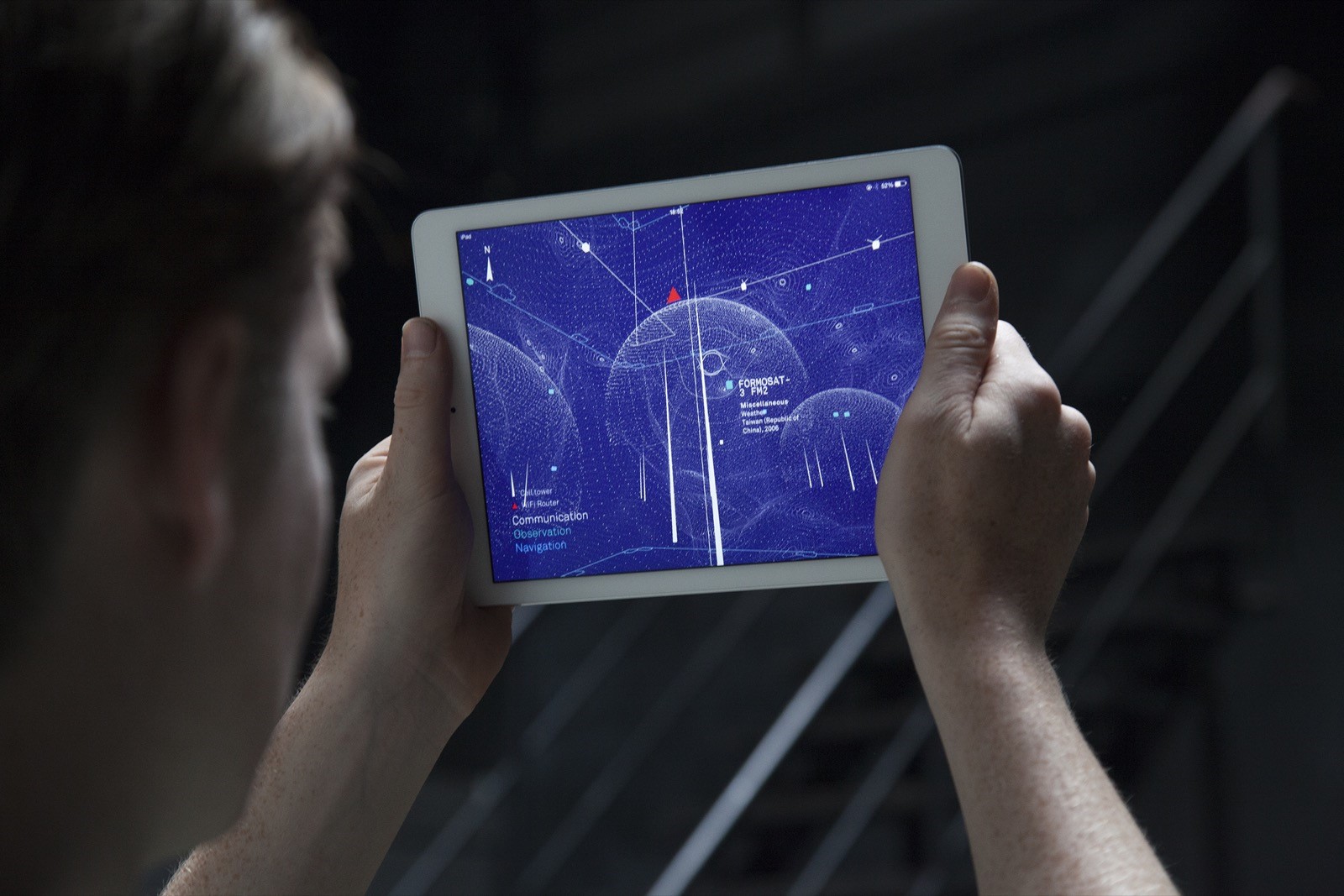
Smothering the world we inhabit with their radiating signals, networks of cell towers, Wi-Fi routers, and GPS signals create an unseen world of electromagnetic information. What if we were suddenly endowed with the ability to see such things? How would this change your perception? The Architecture of Radio, a new exhibit by Dutch designer Richard Vijgen, uses augmented reality to view the ambient nature of iPad app to visualizes the infosphere around us, and reveal the radio waves that interact with our devices on a daily basis.
As an information designer, I'm interested in visualizing things we cannot see,” says Vijgen over email. “Most of the information we consume is delivered to us over the air via radio waves . . . We are connected 24/7 through devices that communicate wirelessly over Wi-Fi or cellular networks, yet contrary to the radio towers and transmission stations of the early days of radio, the infrastructure that underpins our information society is barely visible. Wi-Fi routers are hidden behind bookshelves and cell towers are mounted to existing buildings or disguised as trees.”
On display at the ZKM museum of contemporary art in Karlsruhe, Germany, the exhibition aims to reveal the invisible world amongst us by encouraging visitors to pick up an iPad and view the tangle of data. The images displayed are not artificially fabricated, but actual graphical representations of data overlaid across the iPad’s camera view after being extrapolated from nearby cell towers and satellites discovered using the OpenCellID , as well as that pulsing from nearby Wi-Fi routers.
Vijgen hopes the scope of his project will alter visitor paradigms, changing the way they think about technology and its wild entanglement within our own lives.
“We cannot see the very thing that is defining our time, and that concerns me,” says Vijgen. “As technology is becoming more and more transparent, I think data visualization can help us to relate to things that are invisible, yet play an important role in our lives.”
Source: Creativeapplications.net
Advertisement
Learn more about Electronic Products Magazine





